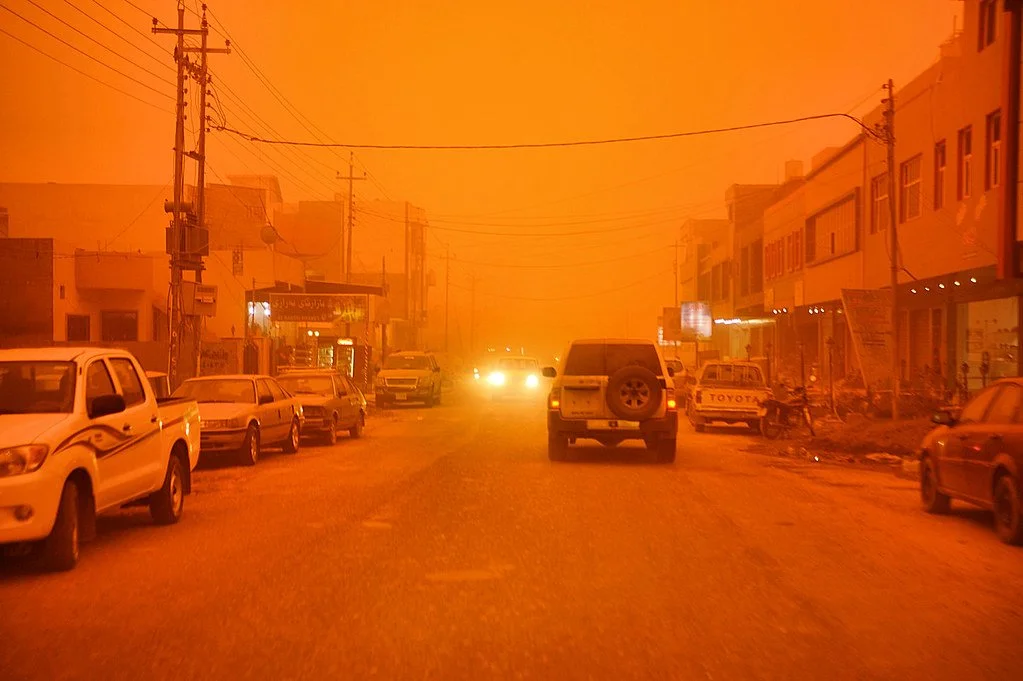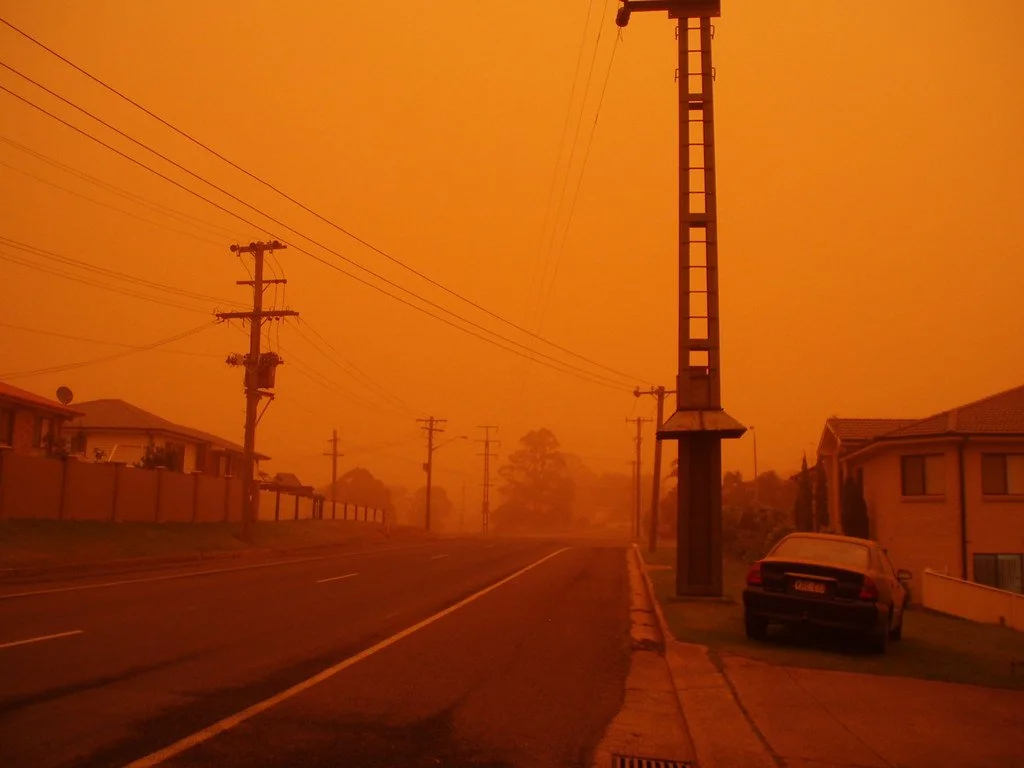Syria and Iraq are experiencing dark orange skies due to an uptake in dust storms these past few months.
Orange dust air in Kurdistan. Lachica Photo. CC BY NC-ND 2.0.
Since March, the Middle East has been plagued with dust storms that have continued into early June. Accredited to climate change, these severe dust storms have been causing mass destruction around the Middle East, forcing the closing of schools and places of work, reducing the air quality over extended periods of time and even sending people to the hospital. With citizens unable to breathe outside their homes and damage being done to property and people, the Middle East is in a state of emergency.
The Middle East is a region familiar with dust storms. Dubbed “Shamal Winds”, the northern wind current that often rips through Middle Eastern areas like Iraq has sent storms to the area for decades. However, the instances taking place this year are said to be far too frequent compared to previous national averages, and climate change is to blame. Typically, the Middle East will face on average around 270 dust storms a year. The Ministry of Environment of Iraq believes that number is predicted to rise to around 300 storms by 2050.
Orange sky after dust storms. Kaptain Kobold. CC BY-NC-SA 2.0.
The main effects of climate change on both the frequency and severity of dust storms have been linked to drought and the “desertification” of large land masses. Dust storms frequently affect arid or semi-arid lands; arid lands describe lands that lack water and become exceptionally dry. The Middle East is experiencing a time of excessive drought and declining rainfall rates. Brookings Institute states that the Middle East is a region listed 12th out of 17 for the most water scarcity, and the rate of rainfalls in the region have declined over the last few decades.
These findings are heavily affecting the ability for northern currents like the Shamal Winds to pick up sand and dust particles from dry hot land, sending them sweeping across the skies of the Middle East. Because such large areas of the Middle East are drying out, strong currents are now able to pick up the dry sand and dust particles into the air, increasing not only the frequency of these dust storms because they are easier to create with progressively dry lands, but also increasing the severity due to particle-heavy air. These particles are also what create the dark orange tint to the air and sky.
Dust storm over the Middle East. Nasa Earth Observatory. CC BY 2.0.
With the air so packed with dust and sand, and with the temperatures rising as summer closes in, the Middle East is suffering. The air quality has now sent thousands to the hospital looking for reprieve from the unbreathable air, suffering from illnesses like asthma, breathing trouble and even lung congestion. Additionally, four deaths in Iraq and Syria have been attributed to the orange air.
As of June, The Weather Channel reported there had been more than 10 dust storms in both April and May, and The Guardian stated that Saudi Arabia had already experienced 35 dust storms in only the first four months of 2022. Scientists and climate activists alike are concerned with the way these dust storms have been ravaging the Middle East, and fear the far-reaching impacts of the severe natural weather.
The Dean of the School of Public Health at the University of Nevada spoke with The Guardian and stated that, “The impact of dust storms exceeds regional and continental boundaries,” making this problem something every country should be concerned about. Greatly linked to climate change and unconcerned with borders, dust storms may be an indication of what is to come for the rest of the globe with rising temperatures drying out massive areas of land.
Ava Mamary
Ava is an undergraduate student at the University of Illinois, double majoring in English and Communications. At school, she Web Writes about music for a student-run radio station. She is also an avid backpacker, which is where her passion for travel and the outdoors comes from. She is very passionate about social justice issues, specifically those involving women’s rights, and is excited to write content about social action across the globe.











